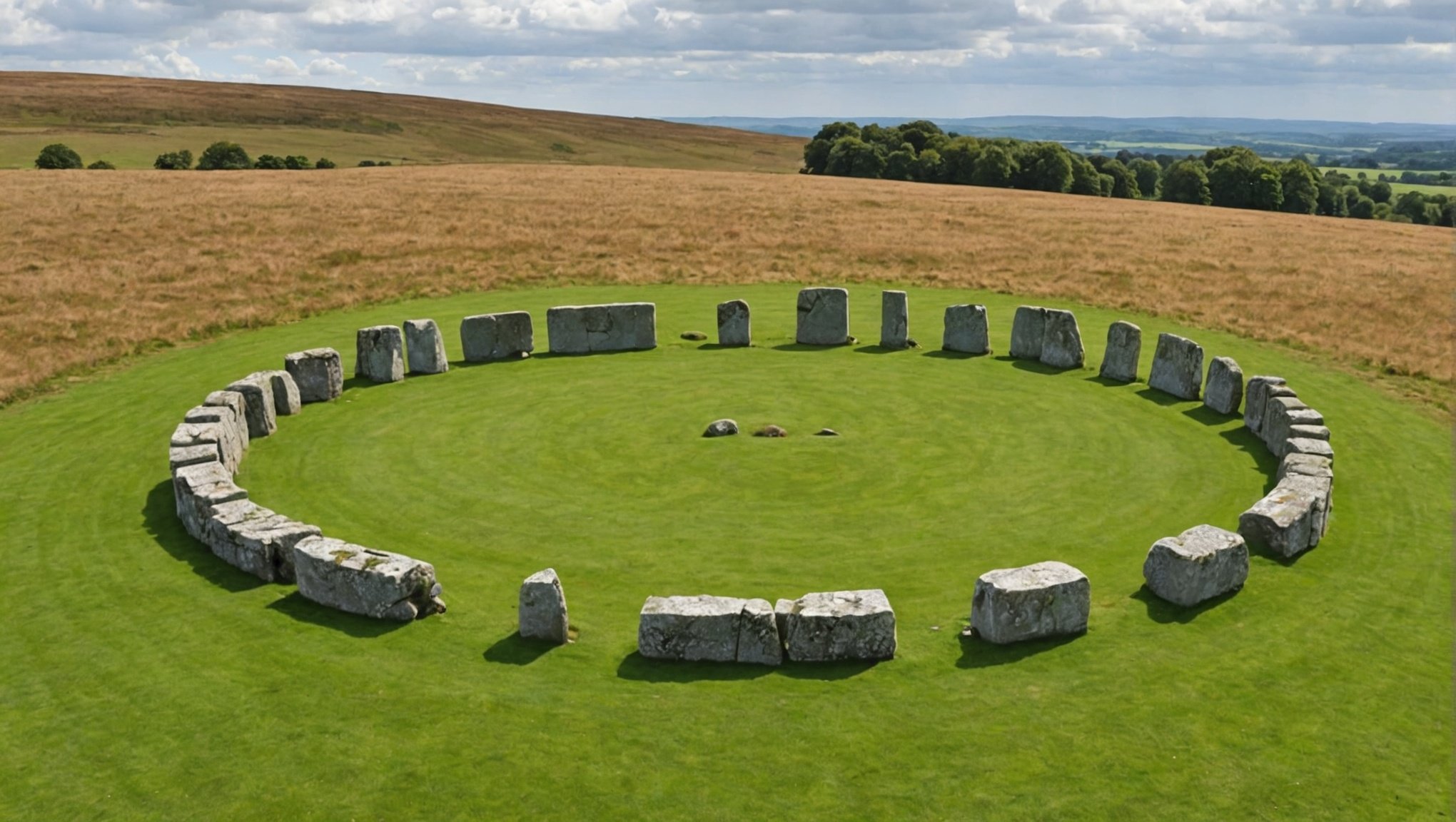Overview of Ancient Stone Circles in the UK
Ancient stone circles are a fascinating testament to the rich history of the United Kingdom. These archaeological sites are much more than mere arrangements of stones. They represent significant cultural artefacts, offering insights into the lives of our distant ancestors.
The historical significance of these ancient stone circles extends beyond their physical presence. They serve as portals to understand societal structures, astronomical orientations, and spiritual practices of the past. These structures, often shrouded in mystery, continue to captivate archaeologists and historians alike.
In parallel : 2024 travel insights: essential tips for every explorer
Beyond the famous Stonehenge, there exist numerous other prominent stone circles that dot the UK landscape. For example, the Ring of Brodgar in Orkney and Avebury in Wiltshire each offer unique insights into ancient UK history. Each site has its own story, adding depth and complexity to the tapestry of Britain’s archaeological heritage.
In modern times, these stone circles maintain their cultural relevance. People frequently visit these sites, drawn by their mysterious allure and historical weight. They serve both as tourist attractions and as sites for cultural rituals and gatherings, bridging the ancient and the contemporary in the lives of those in the United Kingdom.
Also read : Discovering Enchanting Guided Tours of Historic Saxon Churches in England”s Scenic Countryside
Notable Stone Circles to Visit
Discovering the world’s stone circles is an adventure filled with history, mystery, and natural beauty. These Key Stone Circles are not just ancient sites but also compelling tourist attractions complemented by lesser-known hidden gems waiting to be explored.
Avebury Stone Circle
Avebury Stone Circle is a UNESCO World Heritage Site with a fascinating history dating back to about 2600 BC. Unlike its more famous counterpart, Stonehenge, Avebury offers a more immersive experience as visitors can walk freely among the stones. It is larger and more accessible, with several paths allowing easy exploration. Avebury encompasses a village within its rings, creating a unique blend of past and present. The atmosphere here is decidedly less commercialised, encouraging quiet reflection amongst the towering stones.
Callanish Stones
The Callanish Stones are an extraordinary example of Neolithic architecture, deeply ingrained in Scottish history. These stones serve a cultural significance that draws enthusiasts from around the globe. Tours are plentiful, with the summer solstice being an ideal time to visit. Local legends abound, weaving tales of giants turned to stone, enriching the visitor experience. The site offers panoramic views of the Isle of Lewis, where its remote setting adds an element of charm.
Ring of Brodgar
Situated on the Orkney Islands, the Ring of Brodgar forms an impressive circle of Neolithic stone. This site epitomises both a historical landmark and a breathtaking natural setting. Insight into Neolithic architecture is apparent in its expertly arranged stones. Nearby attractions include the Broch of Gurness and Skara Brae, ideal for a day filled with archaeological wonders. Activities like hiking and guided tours offer a deeper connection to the land and its ancient past.
Booking Unforgettable Tours
Exploring ancient stone circles through guided tours can elevate your travel experience. With diverse tour booking options, you can choose itineraries that align with your interests and schedule.
Factors to Consider: When selecting a tour, assess the expertise of the guide. A knowledgeable guide enhances your understanding of the historical significance and cultural context. Consider the duration of the tour; some may last a few hours, while others could span a full day. Group size can also impact your experience, as smaller groups might provide a more intimate and personalized experience. Don’t forget seasonal weather, which could alter not only clothing requirements but also accessibility to certain sites.
Recommendations for Reputable Operators: Reputable tour operators offer well-organized tours with clear itineraries and transparent pricing. Look for companies with positive reviews, as previous participants’ feedback is invaluable. Some operators specialize in ancient stone circle tours, providing in-depth narratives and insider knowledge. Opting for operators with sustainable practices can enhance your experience, knowing that you’re supporting environmentally responsible tourism.
Ultimately, a well-chosen tour can transform your visit to ancient stone circles into a memorable journey, brimming with historical insights and rich cultural narratives.
Travel Tips for Visitors
Planning a trip to ancient stone sites requires thoughtful preparation to ensure an enriching experience. Among the first considerations is picking the best season to visit. The optimal time varies depending on the site’s location. Typically, spring and autumn offer mild weather, making exploration more pleasant.
For transportation, options range from rental cars to public transport. Renting a car provides flexibility and allows visitors to reach remote stone sites effortlessly. However, public transport can be a cost-effective and less stressful option, especially if pre-planned using visitor information centres. They often supply transportation schedules and maps, aiding in navigation.
Packing essential items is crucial for a successful trip. Comfortable walking shoes and layered clothing adapt to varying climates. It is also advisable to carry a refillable water bottle to stay hydrated during long explorations. Don’t forget a reliable camera to capture the beauty of these timeless landmarks.
Understanding transportation logistics and optimal visiting times can greatly enhance the travel experience. Proper preparation aligns with visitor information and travel tips, ensuring encounters with ancient stone sites are both memorable and effortless.
Personal Experiences and Anecdotes
Exploring diverse places through visitor experiences offers fascinating insights that transform ordinary trips into unforgettable adventures. People have shared travel stories from past tours, offering glimpses into the incredible diversity and unique elements each site presents. One notable experience involves a visitor who encountered a local festival by chance, immersing themselves in the vibrant celebrations, colours, and music unique to that region. This cultural interaction underscored the importance of flexible itineraries, allowing for spontaneous discoveries.
Engaging with the community often enriches the journey. Travellers frequently mention the warmth and hospitality of locals, which often transforms their trips from mere sightseeing to meaningful community insights. For instance, a traveller recounted an impromptu tea session with a local family, providing an authentic slice of life experience enhanced by personal stories and homemade treats.
Moreover, local guides consistently enhance tours by sharing their recommendations. Their nuanced understanding of the area helps visitors uncover hidden gems and lesser-known attractions, significantly enriching the overall travel experience. Recommendations might include visiting a secluded beach at sunset or dining at a small, family-run restaurant featuring traditional local cuisine. These personalised journeys frequently yield the most treasured memories.






